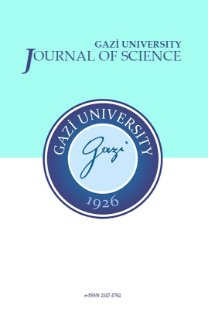Geometric Patterns Used in the Architecture of Kaboud Mosque in Tabriz, Iran
Geometric Patterns Used in the Architecture of Kaboud Mosque in Tabriz, Iran
Geometric structures, Golden proportions Mosque architecture, Kaboud Mosque, Iranian-Islamic architecture,
___
- [1] Robinson, G.B., “The Foundations of Geometry”, Toronto: University of Toronto Press, (2019).
- [2] Silvaye, S., Daneshjoo, Kh., and Farmihan Farahani, S., “Geometry in pre-Islamic Iranian architecture and its manifestation in contemporary Iranian architecture”, Naghsh Jahan Journal, 3(1): 55-65, (2012).
- [3] Williams, K., and Ostwald. M.J., “Manifestations of Geometry in Architecture”, Nexus Network Journal, 19(1), 1-13, (2017).
- [4] Mohammadzadeh, N., “Geometry and Proportions in Architecture”, First edition, Tehran: Iran Publishing, (2016).
- [5] Memarian, Gh.H., “Introduction to Islamic Architecture of Iran”, First edition, Tehran: Memarian Publishing, (2017).
- [6] Taheri, J., and Nadimi. H., “The Hidden Dimension in Islamic Architecture of Iran”, Sefeh Magazine, 24(2), 5- 25, (2014).
- [7] Pirnia, M.K., “Stylistics of Iranian Architecture”, First edition, Tehran: Memarian Publishing, (2019).
- [8] Kabir Saber, M., Mazaherian, H., and Follow, M., “Architectural Morphology of Kaboud Mosque, Tabriz”, Iranian Architectural Studies, 6: 5-23, (2014).
- [9] Rabiee, H., “Essays on the nature of Islamic art”, First edition, Tehran: Text Art Publications, (2012).
- [10] Rezazadeh Ardebili, M., “Restoration of Architectural Works”, First edition, Tehran: University of Tehran Press, (2016).
- [11] Pope, A., “Iranian Architecture”, Translated by Gholam Hossein Sadri Afshar, First edition, Tehran: Dot Publications, (2011).
- [12] Madadpour, M., “Manifestations of Spiritual Wisdom in Islamic Art”, First edition, Tehran: Amirkabir Publications, (2011).
- [13] Bloom, J., and Blair, Sh., “Islamic Art and Architecture”, Translated by Ardeshir Ishraqi, First edition, Tehran: Soroush Publications, (2013).
- [14] Hillenbrand, R., “Islamic Architecture: Form, Function and Meaning”, Translated by Baqer Ayatollahzadeh Shirazi, First edition, Tehran: Roozbeh Publications, (2012).
- [15] Rice, D., “Islamic Art, translated by Malek Bahar”, First edition, Tehran: Scientific and Cultural Publications, (2011).
- [16] Sultanzadeh, H., and Yousefi, M., “How to use the geometry and separation of spaces in prehistoric architecture of Iran”, Journal of Architectural Thought, 1(1): 54-70, (2015).
- [17] Ziaei Nia, M.H., and Hashemi Zarjabadi, H., “Golden Proportions and the Iranian-Islamic Proportion System in the Ghaen Grand Mosque”, Iranian Journal of Restoration and Architecture, 6(15): 89-99, (2016).
- [18] Mehdizadeh Siraj, F., Tehrani, F., and Walibeig, N., “Application of Normal Triangles in Mathematical Calculations and Implementation of Geometry in the Construction and Execution of Traditional Iranian Architecture”, Restoration of Historical and Cultural Historical Works and Textures, 1: 15-26, (2011).
- [19] Bolkhari Ghahi, H., “Philosophy, Geometry and Architecture”, First edition, Tehran: University of Tehran Press, (2016).
- [20] Najib Oglu, G., “Geometry and Decoration in Islamic Architecture”, First edition, Tehran: Rozaneh Publications, (2018).
- [21] Brug, E., “Geometric Patterns in Islamic Architecture”, translated by Mojgan Hatefi, First edition, Tehran: Yazda Publications, (2016).
- [22] Abbasi, N., Valibeig, N., and Arya, N., “A Comparative Study of the Entrance Circulation of Abbasi Jame’ Mosque and Seyyed Jame’ Mosque in Isfahan from the Perspective of the Persian Geometric Proportion in an Architectural Plan”, Culture of Islamic Architecture and Urbanism Journal, 6(1): 39-51, (2021).
- [23] Kazemi, L., Akbari Namdar, S., Mosavi, M., and Sattari Sarbangholi, H., “EThe Comparative comparison of Isfahan’s Imam Mosque and Istanbul's Suleymaniye Mosque geometry on the basis of archetype concepts”, Journal of Architecture in Hot and Dry Climates, 6(8): 119-138, (2019).
- [24] Rahravi Poodeh, S., and Valibeig, N., “Analysis of Design drawing Process with Historiographic Documents special geometry knowledge”, Journal of Architectural Thought, 4(8): 12-28, (2020).
- [25] Rian, I., Sassone, M., and Asayama, S., “From fractal geometry to architecture: Designing a grid-shell-like structure using the Takagi–Landsberg surface”, Computer-Aided Design, 98: 40-53, (2018).
- [26] Rezazadeh Ardebili, M., and Sabetfard, M., “Recognizing the application of geometric principles in traditional architecture Case study: Sun Palace and its hidden geometry”, Journal of Fine Arts, 18(1): 29-44, (2015).
- [27] Ziaee Nia, M., and Ghorbani, H., “Re-reading the Geometric Basics and Golden Ratio of Showkateyeh School”, pazhoheshha-ye Bastan shenasi Iran, 5(9), 207-222, (2016).
- [28] Hooshmand, F., Valibeig, N., Behzadfar, M., and Faizi, M., “Analysis of the Effect of Geometric Properties on the Structure of the Shell of Historical Squares of Tehran”, Journal of Sustainable Architecture and Urban Design, 9(1), 27-38, (2021).
- [29] Shemesh, A., Talmon, R., Karp, O., Amir, I., Bar, M., and Grobman, Y.J., “Affective response to architecture – investigating human reaction to spaces with different geometry”, Architectural Science Review, 6(2): 116- 125, (2017).
- [30] Golabchi, M., and Javani Dizaji, A., “Architectural Technology of Iran”, First edition, Tehran: University of Tehran Press, (2016).
- Yayın Aralığı: 4
- Başlangıç: 1988
- Yayıncı: Gazi Üniversitesi, Fen Bilimleri Enstitüsü
A Fuzzy Logic Approach and Path Algorithm for Time and Energy Management of Smart Cleaning Robots
Hakan ŞİMŞEK, Faize Nur ERTÜRK, Recep ŞEKER
Mehmet Ali SALDAMLI, Yusuf Alper KAPLAN, Gülizar Gizem ÜNALDI
Geometric Patterns Used in the Architecture of Kaboud Mosque in Tabriz, Iran
Mahya GHOUCHANİ, Faeze GHOLİZADE, Hooman SOBOUTİ
Sertac Samed SEYITOGLU, Ömer Faruk TOZLU, Emir AVCIOĞLU
Veli ŞİMŞEK, Kırali MURTEZAOĞLU
Discrete-Time Gompertz Model for Adana Breed Pigeons
Framework for Heterogeneous Sensor Data Stream Management with BIM and WSN
A Comparative Study on Denoising from Facial Images Using Convolutional Autoencoder
Muazzez Buket DARICI, Zeki ERDEM
Prioritizing Individuals Who Will Have Covid-19 Vaccine with Multi-Criteria Decision Making Methods
Emre YAZICI, Sabire İrem ÜNER, Aslı DEMİR, Sevda DİNLER, Hacı Mehmet ALAKAŞ
